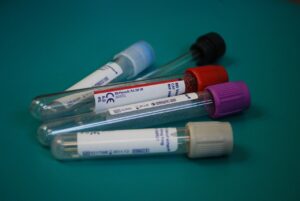Lambert-Eaton Myasthenic Syndrome (LEMS)
What is Lambert-Eaton myasthenic syndrome (LEMS)?
LEMS is an autoimmune disease, which means the immune system goes on attack against healthy cells in the body by mistake. In the context of LEMS, the immune system targets and interferes with nerve cells and, consequently, the muscles with which they connect. Lambert-Eaton Myasthenic Syndrome was named after the two scientists, Edward Lambert and Lee Eaton, who discovered it between the 1950s and 60s.What are the symptoms of LEMS?
People with LEMS typically experience:- Muscle weakness in legs
- Trouble walking, chewing, talking, swallowing, and lifting objects
- Head droop
- Blurry vision
- Changes in blood pressure
- Dizziness
- Dry mouth
- MG targets the ACh receptors in muscle cells. LEMS stops the ACh from getting to nerve cells.
- LEMS begins with muscle weakness in legs and arms. MG begins in the eyes.
- LEMS is associated with small-cell lung cancer. MG is associated with thymoma.
What causes LEMS?
Researchers can hardly ever be sure what causes a person’s immune system to turn against the body. However, in 60% of all reported cases of Lambert-Eaton Myasthenic Syndrome, patients suffer from a comorbidity, specifically small-cell lung cancer. In an attempt to fight against the cancer, the body will mistakenly target healthy nerve-fiber endings. It has been observed that at least 90% of people with LEMS have a heavy amount of a protein (called a “voltage-gated calcium channel” or VGCC) that is essential for allowing calcium into nerves cells to aid in the release of acetylcholine (ACh). ACh plays a pivotal part in muscle contraction, which allows a person to perform basic functions like move a hand or walk up a set of stairs.What treatments are available for LEMS?
At this time, there is no cure for LEMS. However, there are treatments available, such as plasmapheresis or prednisone, to treat the symptoms of muscle weakness in legs and blurry vision. If LEMS is caused by small-cell lung cancer, doctors will target the cancer in treatment.Where can I find more information about LEMS?
Lambert-Eaton Myasthenic Syndrome (LEMS) Articles

FDA Approves Dosage Boost for Lambert-Eaton Myasthenic Syndrome Drug FIRDAPSE
James Moore
June 28, 2024
Read More »

From Family Planning to Cancer Screening: A Young Person’s Guide to Living with LEMS
Jessica Lynn
December 5, 2023
Read More »

Patient Advocate with LEMS Writes Rap Anthem for Rare Disease Community
Jessica Lynn
October 30, 2023
Read More »


ICYMI: His Doctors Finally Discovered the Cause of His Immune-Mediated Necrotizing Myopathy
Rose Duesterwald
July 6, 2022
Read More »

Lambert-Eaton Myasthenic Syndrome: Learning Self-Advocacy by Changing Treatment
Rose Duesterwald
May 28, 2021
Read More »

Study of the Week: Lambert-Eaton Myasthenic Syndrome Found in Merkel Cell Carcinoma
James Moore
May 24, 2021
Read More »

ICYMI: Case Study Demonstrates Lambert-Eaton Myasthenic Syndrome May be Linked to Merkel Cell Carcinoma
Trudy Horsting
May 21, 2021
Read More »




